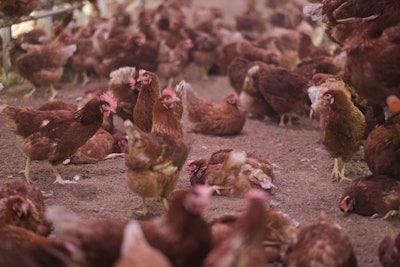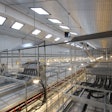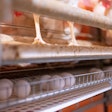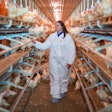
Two research projects that will help determine if genetic selection can improve keel bone health in commercial layer hens have received funding from the Foundation for Food & Agriculture Research’s (FFAR) and Open Philanthropy’s newly launched Layer Hen Keel Bone Health Program.
The funds are being awarded in two grants totaling US$2,989,012 to researchers Dr. Ian Dunn and Dr. Huaijun Zhou at the University of Edinburgh and the University of California, Davis (UC Davis), respectively.
Dr. Dunn’s project
Dunn’s research will use x-ray images and machine learning to validate the measurements of bone quality and keel damage in commercial hens. These measurements will help select hens that have more resilient keel bones based on their genetic makeup. The team also plans to examine if breeding programs for improved keel health should depend on the housing style they will live in.
According to Dunn, previous research has noted the importance of bird age at puberty on bone strength. Dunn plans to explore how manipulating diet and light to delay puberty could affect bone quality, as well as if a diet that produces a lower amount of amino acid homocysteine increases collagen strength to improve keel bone quality.
“Keel bone damage is a particular problem as non-cage systems are in increasing use across the world,” stated Dunn. “This project seeks to enable genetic selection directly for the keel bone itself, as well as novel nutritional approaches and the influence of the timing of when hens start to lay eggs on their bone quality.”
Dr. Zhou’s project
Zhou’s research team plans to decrease keel bone damage by examining layer housing environments and studying its relationship with genetics. To help him do so, Zhou is collaborating with genetics company Hy-Line International on the project.
Zhou’s project will involve identifying genetic markers associated with keel bone damage in breeding flocks raised under various housing types and determining how genetic selection can promote resistance to keel bone fractures.
His team will also evaluate the effects of housing design on the development, type and prevalence of keel bone damage and conduct economic analyses on alternative housing designs that may suit layer keel health better.
“Like many other economically important traits in poultry, keel bone damage is a complex issue affected by genetic and environmental factors, such as type of housing system,” stated Zhou. “By partnering with the world’s leading poultry breeding company, Hy-Line International, we are thrilled with the opportunity to apply advanced genetic, genomic and precision livestock farming technologies to sustainably improve poultry well-being and production.”
Danny Lubritz, Hy-Line International Director of Research and Development, said: “We believe this research will deliver tools for the early detection and genetic improvement of keel bone health in cage and cage free settings. Hy-Line International can integrate this information into its genomic program to simultaneously improve egg production, egg quality and bird welfare.”


















